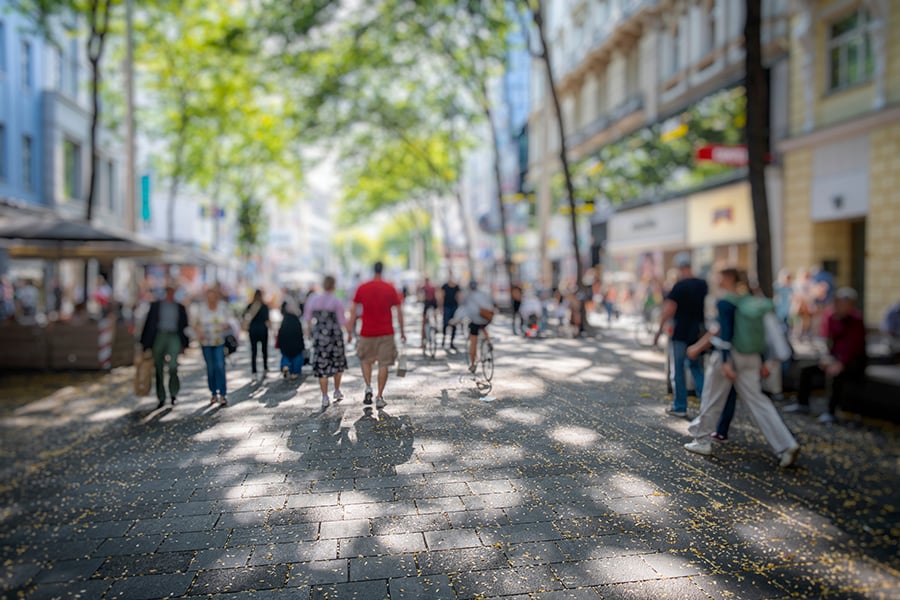Understanding social value in a changing world

What is social value?
Social value is a broad term. It refers to the net social, environmental, and economic impact of something, such as an urban development project or a community regeneration initiative. It defines the impacts, both positive and negative, that decisions, investments and activities have on the lived experiences of individuals, and how this plays out for prosperity and place. Understanding and applying the social value concept means taking a strategic and holistic approach to social impact, with the objective of maximising the net value created for society, driving improvements in wellbeing and quality of life for all.
Why is it so important?
Successful places are much more than streets, buildings, businesses, and infrastructure. People make places distinctive and exceptional, and improving lives through shaping urban environments must be at the core of any placemaking strategy.
With so many issues facing society today, from high levels of loneliness to rising rates of obesity and respiratory illnesses, the built environment has a real opportunity to shape healthy societies that combat multiple problems. An understanding of social value and how it can be optimised can help a decision maker determine, for example:
- How to forecast and appraise the value created by nationally significant transportation schemes
- How to phase a city-wide transit-orientated development
- How to look back and evaluate the impact of a community housing investment programme.

Solving entrenched problems beyond metrics and targets
Rather than focusing on cost and profit, social value thinking casts the net wider to ask “who benefits, who might be left behind, and how does this shape our places over time?”.
With this thinking we can spot the hidden costs of seemingly “cheap” or “affordable” decisions, and the hidden benefits of investments that at first glance seem too expensive. For example, the cost of meeting the housing needs of our ageing population, or investing in high-quality housing may look unaffordable on paper, but if the quality of the environment improves health and wellbeing, reduces GP and hospital visits, improves school attendance and educational attainment, and strengthens cohesion within the community, the overall value is far greater. This approach, if adopted by all strategic partners involved in placemaking, can ensure that public money and private investment converts into positive and lasting change. This is why public-private partnerships with outcomes-based contracts are so important, to align incentives between public good and private sector return on investment, measuring what matters and treating social value as a return in its own right.
Moving beyond ticking boxes
If we want to have a real impact on lives, we must move beyond social value being a box ticking exercise at the procurement stage of a project. And at a time, globally, when decision-makers’ commitments to ESG feel less certain, it’s more important than ever to deliver genuine community benefits. As an example, in Australia Haven Home Safe, a Melbourne-based community housing provider, is redefining its role by embedding social value at the heart of an ambitious model neighbourhood proposal in regional Victoria. Partnering with Hatch, the project challenges traditional low-density norms by introducing diverse, affordable housing typologies that support an integrated, inclusive community. Social impact principles—central to Haven Home Safe’s mission—informed every aspect of the vision, from housing design to community cohesion, ensuring the neighbourhood fosters wellbeing, equity, and long-term resilience. Supported by Hatch’s expertise in sustainability and place-based planning, the proposal demonstrates how regional growth can be both socially responsible and locally grounded, offering a compelling case for ‘urbanising the suburbs’ in a way that benefits all.
In the UK, at Kings Cross, London, we worked with Argent and King’s Cross Central Limited Partnership to quantify the social and economic impact of the masterplan-led regeneration of King’s Cross to capture the positive and long-term economic and social impacts of the project. By developing a novel approach to collecting, analysing, and reporting impacts, we built a robust evidence base about what works to optimise the positive effects of future investments and regeneration projects, including the ongoing development and management of the built environment in the masterplan area.
Delivering lasting value
Whatever the scale and context, understanding the social impacts of new development and delivering change that benefits the communities in which this is happening must be embedded in the development process. There is a huge opportunity here to “do” development better. We have the power to address many of the social issues communities face with innovative and creative solutions.
And in doing so, we can have a lasting, positive impact on people’s lives.
